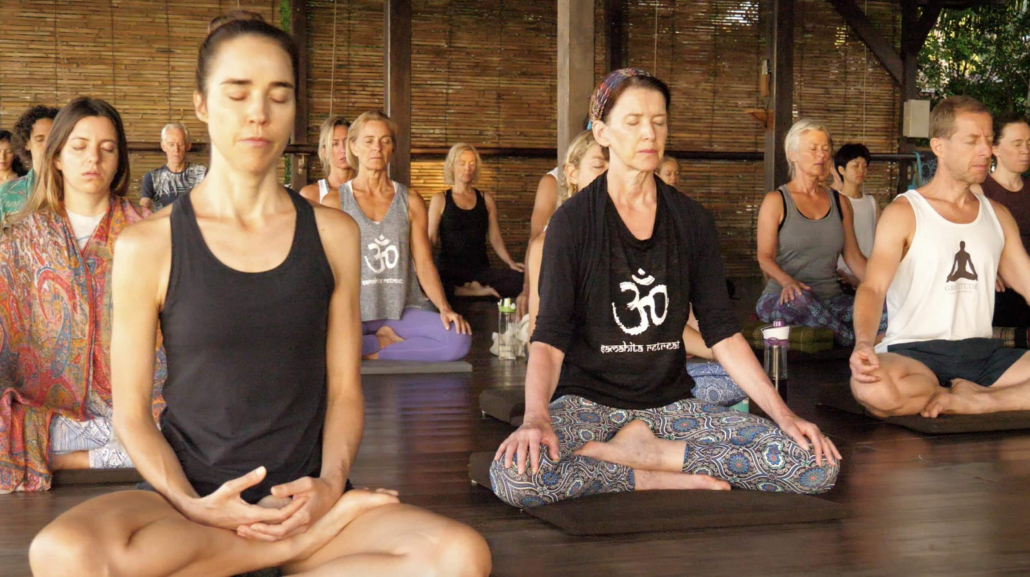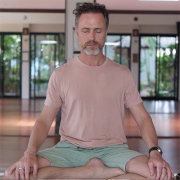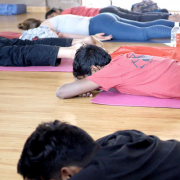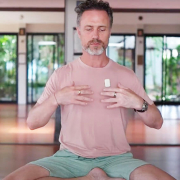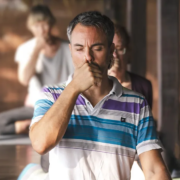 https://samahitaretreat.com/wp-content/uploads/2024/02/MB-Pranayama.webp
600
800
Dr. Paul Dallaghan
http://samahitaretreat.com/wp-content/uploads/2024/01/samahita-logo-v2.svg
Dr. Paul Dallaghan2020-04-26 04:54:132024-02-15 09:35:0310-minute Breathwork for Stress: the Quad-Ratio Breath 1-1-2-1
https://samahitaretreat.com/wp-content/uploads/2024/02/MB-Pranayama.webp
600
800
Dr. Paul Dallaghan
http://samahitaretreat.com/wp-content/uploads/2024/01/samahita-logo-v2.svg
Dr. Paul Dallaghan2020-04-26 04:54:132024-02-15 09:35:0310-minute Breathwork for Stress: the Quad-Ratio Breath 1-1-2-1Bhramari Humming Breath Benefits
The practice of the ancient hathayoga humming breath “Bhramari” has been recommended for hundreds of years that when done repeatedly and correctly produces “an indescribable blissful experience that fills the mind” (1). Similar to the practice of repeating the sound of Om on an exhale, it is a wonderful practice that delivers many benefits.
Om & Bhramari Practice History
The practice of repeating the monosyllabic sound of Om on one exhalation is noted in ancient texts over 2,000 years ago. In addition to the prolonged exhalation value as noted in our previous blog: The Power of Exhalation it introduces a vibration due to the sound of Om across the pharynx, nasal, and sinus regions.
Bhramari is a later developed hathayoga practice, documented almost 700 years ago in hathayoga’s classic text, the Hahthapradipika, but has most likely been practiced longer than that. It imitates the sound of the black bee which lends it its name in Sanskrit. This is also a humming type of breath but more isolated to the region of the soft palate in the naso-pharyngeal space. You can find this space by turning your tongue back and seeing the point you can touch with your tongue. Or, if adventurous, open your mouth, put one finger directly in and back and it should touch the back end of the soft palate. Bhramari’s vibration happens just beyond that on the pharynx’s muscular wall. When sitting silently with soft breath it is also the first space you feel the touch of the breath inside after having entered the nostrils. Or open anatomy book, or online, and look for this “naso-pharyngeal” region.
” Bhramari offers the advantages of regulated breathwork and the added health benefits of increased nitric oxide production in the nasal and sinus regions.”
Four Key Benefits of Bhramari:
-
Psychological well-being
Bhramari’s relationship to the practice of Om places it in the context of psychological well-being to focus and clear the mind resulting in a calm, peaceful state. The recitation of Om is recommended in the classical yoga teaching to give such an effect and bhramari follows closely, giving, as noted, “an indescribable blissful experience that fills the mind” (1)
In addition to a healthy mental impact it has benefits on the body’s psychological functioning:
-
Blood pressure regulation aid
Recent discoveries involving the molecule nitric oxide (NO) confirm humming’s valuable health-promoting effects in terms of blood pressure regulation to antimicrobial defense (2). It states the isolated practice of humming on exhalation can increase nasal NO levels 15-fold compared to quiet exhalation (3).
-
Management of anxiety
As a dedicated breathing exercise inserted into a routine, (see Breathwork for Anxiety and Other Difficulties), Bhramari offers the advantages of regulated breathwork and the added health benefits of increased nitric oxide production in the nasal and sinus regions.
-
Sleep support
Bhramari also provides support with sleep disturbances by helping induce a feeling of calm before bed. It is an ideal practice for the end of the day and one of your best aids to quieten the busy mind and allow genuine relaxation and proper sleep restoration to occur.
The simple yet highly effective practice of Bhramari has an all-round positive effect on both our Psychological and Physiological wellbeing. You can add this on to any existing meditative or breath practice routine. Or just practice it separately to enjoy its benefits as it’s highly portable, meaning you can do it anywhere.
Link to Main Article:
The Power in Yoga’s Approach to Upgraded Breathing
Dr. Paul Dallaghan’s expertise with breathwork, body and meditative practices comes from three sources: (1) three decades of daily dedicated practice and teaching these techniques; (2) uniquely acknowledged in the Yoga tradition by the title of “Master Yogi-Prānācharya (expert in breath)”, following an immersion in the original culture through one-on-one direct training in practice and study of ancient texts; (3) a PhD in doctoral scientific research at a leading US university (Emory) covering both the tradition and science of yoga and breath practices in terms of stress, health and aging. As a result, Paul occupies a unique space to impart genuine teaching and science on the breath, body, and meditative practices, seen as a Teacher-of-teachers and identified to carry on the tradition of Pranayama. His sincere and ongoing role is to teach, write and research, to help put out experienced and authentic information on these areas of how we live, breathe and be, to help people improve their mental and physical health, and live more fulfilling lives.
For more on his background see his bio
References
- The Hathapradipika, chapter 2, verse 68 on bhramari. An original hathayoga Sanskrit text dated to approx. 1450 CE
- Culotta, E., & Koshland Jr, D. (1992). NO News Is Good News. Science, 258(5090), 1862-1865.
https://science.sciencemag.org/content/258/5090/1862 - Weitzberg, E., & Lundberg, J. O. (2002). Humming greatly increases nasal nitric oxide. Am J Respir Crit Care Med, 166(2), 144-145. doi:10.1164/rccm.200202-138BC
https://www.atsjournals.org/doi/full/10.1164/rccm.200202-138BC
More from the Samahita Blog
